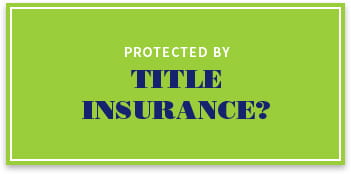Buying Land in Melbourne
Before you sign a contract, consider using our ‘detailed report’ service – Call 03 9210 2188 now for details.
Find out what you can and can’t do with vacant land, when buying in Melbourne or buying vacant land in Victoria. Low Cost Conveyancing services offers detailed reports for a fee, of which a portion is refunded to you by us, when we do the conveyancing work for you on that property.
Typical questions that we get asked a lot –
Can I sell the land without building a house first?
What can I build on the land for sale?
What restrictions are there on the land?
Is the land subject to flooding?
When will the land be ready for settlement?
What can’t I don’t with the land?
What can I do with the land?
Buying land in Victoria isn’t as straight forward as you would image! Low Cost Conveyancing has more than 20 years experience solely in property conveyancing. Why pay the best when you can use the best, at a more affordable price?
Other general information about buying or selling land in Melbourne or across Victoria.
Blocks of land can literally come in all sizes. Dozens of new residential subdivisions are available all the time.
The question you need to ask yourself could be ‘What type of house do I want to build?’ The answer may well determine the size of the land that you will need.
Then you need to find a block that will accommodate the size of the house you want to build. Once you start looking you will see so many blocks of land for sale with varying shapes and sizes and then the prices!! Land prices in Melbourne are getting more expensive every year and the size seems to be getting smaller for the same money a few years ago.
Blocks of land come in all shapes. There are square and rectangular blocks, corner blocks, battle-axe blocks and blocks with no street frontage and a long driveway for access. There are flat blocks, steep blocks, sloped blocks, blocks with cliffs, blocks set down from the road and blocks set above the road. There are low-lying blocks and blocks with waterways nearby. There are blocks that face north-south or east-west, blocks that are in the lee of a hill and ones which fully face the weather. There are timbered blocks, blocks close to bushland, rocky blocks and blocks subject to erosion or with unstable soil.
Each shape and size will present challenges for the design of your home. If the block you are looking at is rectangular, flat, with full street frontage, in a flood-free area away from bushland and without trees, with access to all services in a new or existing residential sub-division, and with stable soil without rocks then congratulations. If you also have a view then, as they say, you've struck pay-dirt.
If the block you are looking at has some of the other features mentioned above then you'll need to carefully evaluate how they will impact the design and cost of construction.
Some factors worth noting are:
Soil: You should consider having a soil test performed by a qualified engineer before you buy land. The cost of building your house's foundations can ultimately depend on the type of soil that it's built on. The type of soil that your property is situated on can incur extra costs for earthworks and land retention.
Steepness: The steepness of the land must also be considered since steeper land is likely to be costlier to build upon. Be aware of blocks that lie beneath the level of the road as they might present a problem with water runoff in stormy weather. Flat is cheapest!.
Utilities: Contact utility companies to check the cost of connecting your block of land to water, gas and electricity if the service connections are not included.
Orientation: Land with a north-facing alignment and a backyard may reduce your energy bills. This is because north-facing rooms are able to maximise the amount of sunlight received during winter and minimise sunlight exposure during the warmer months. This could mean your future house is naturally warmer in the winter and cooler in the summer, saving you money on heating and cooling costs.
Trees: There may be restrictions on removing trees that could prove expensive.
Before you sign a contract, consider using our ‘detailed report’ service – Call 03 9210 2188 now for details.
Location, Location, Location
Choosing land close to services such as shops, parks and schools can save you travel time, but be aware of issues like noise pollution. A better location might not offer your ideal piece of land or desired price, but can be worth it if you are able to walk or cycle to shops, schools and public transport, making life easier.
As important as proximity to services are, there are some location issues it is important to be very aware of as they may impact your ability to obtain finance, restrict the type and design of house you can build, and increase construction costs.
Check whether the area is prone to natural disasters such as floods, bushfires or cyclones.
Low-lying areas situated near rivers tend to have a high risk of flooding in Australia. Before buying land, contact the local council to find out if the land is in a flood zone.
Land use will also be limited by council or state government planning controls. Things to look for include required setback from boundaries, shadow rules, height restrictions, open space requirements, and minimum block size (if you want to consider future sub-division opportunities). Building design may also be impacted by heritage area requirements.
Buying a block of land to suit your needs can be an exciting yet anxious time.
Call the experts in property Conveyancing now on 03 9210 2188




